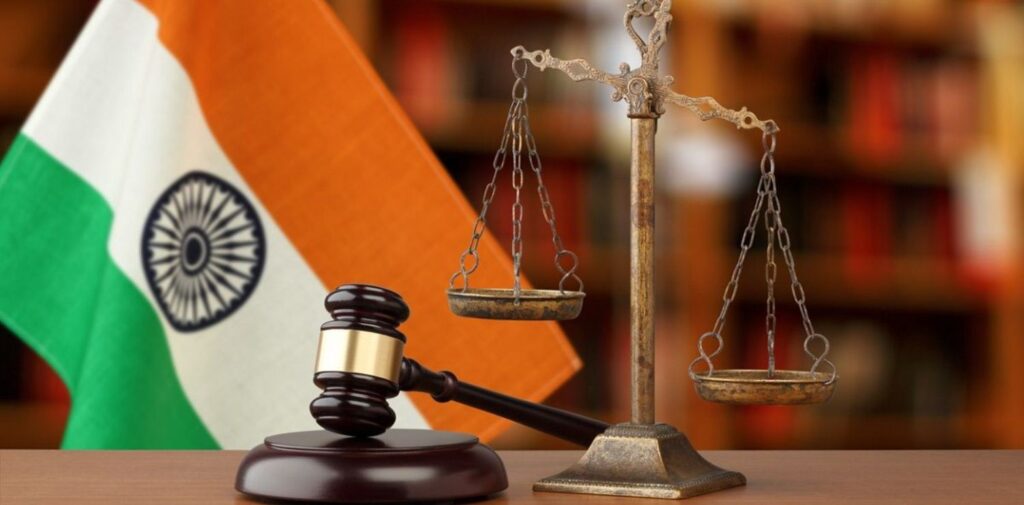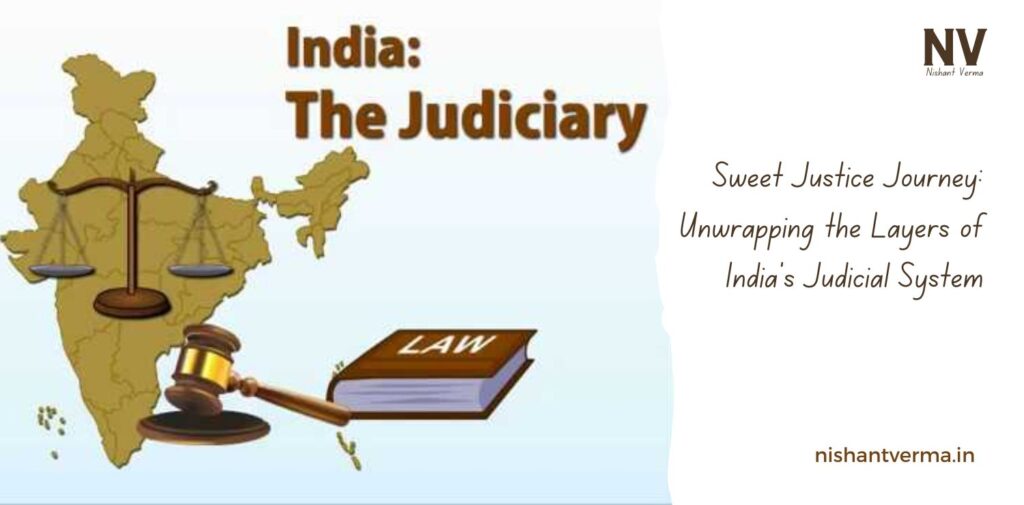Imagine the Indian judicial system as a vast, intricate chocolate factory where each component plays a vital role in creating something sweet and satisfying—justice for all citizens. Just like every piece of chocolate is carefully crafted, the judicial system is designed to ensure fairness, uphold rights, and protect the rule of law. This article will explore the Indian judicial system in detail, breaking it down into easy-to-understand sections, using chocolate as a fun analogy to illustrate key points.
The Structure of the Indian Judicial System
The Indian judicial system is organized in a hierarchical manner, similar to a multi-layered chocolate cake. Each layer has its own function, and together they create a complete system. Let’s examine each of these layers:

The Supreme Court of India
At the top of the judicial pyramid is the Supreme Court of India. This is like the cherry on top of the cake—essential and impressive. Here are its key features:
- The Highest Authority: The Supreme Court is the ultimate arbiter of justice in India. Just as the best chocolates are judged by expert tasters, the Supreme Court reviews cases to ensure fairness and uphold justice.
- Chief Justice and Judges: The Chief Justice of India leads the Supreme Court, supported by 25 other judges. Together, they ensure that the laws are interpreted correctly, just like a master chocolatier ensures the chocolate recipe is followed precisely.
- Constitutional Guardian: The Supreme Court protects the Constitution, which serves as the foundational recipe for the country. If anyone attempts to violate the Constitution, the Supreme Court intervenes to maintain order and justice.
- Public Interest Litigations (PILs): Citizens can approach the Supreme Court with issues affecting the public. This is akin to a chocolate lover voicing concerns about product quality, ensuring that consumer interests are protected.
High Courts
Below the Supreme Court are the High Courts, which function like the various flavors of chocolate in a chocolate shop. Each High Court serves a specific region and has several critical responsibilities:
- Hearing Appeals: When a person is unhappy with a lower court’s decision, they can appeal to the High Court. This is similar to a customer requesting a different flavor of chocolate if the one they chose wasn’t satisfying.
- Writ Jurisdiction: High Courts can issue orders to protect citizens’ fundamental rights, just as a chocolatier ensures that every chocolate meets quality standards. They can hear cases on issues such as illegal detention, discrimination, and other violations.
District Courts
The District Courts are the grassroots level of the judicial system, similar to the local chocolate factories producing chocolate treats. They handle the majority of cases in India and include:
- Trial Courts: District Courts conduct the initial trials of cases, much like the first testing phase in a chocolate factory. They deal with both civil and criminal cases, ensuring that justice starts at the community level.
- Family and Revenue Matters: These courts address issues such as divorce, child custody, and property disputes. They play a vital role in resolving conflicts within families, similar to how a chocolate maker ensures that every batch is just right for their customers.

The Process of Justice: How It Works
Understanding how justice is delivered can be simplified by likening it to the chocolate-making process, where each step is crucial.
Filing a Case: The Ingredients
The first step in the judicial process is filing a case. This is like gathering the finest ingredients to make a delicious chocolate. A person (or a group) who feels wronged or seeks justice files a complaint in court. This initial step is essential as it sets the stage for what follows.
The Trial: Mixing and Baking
After filing a case, the trial process begins. Here’s how it unfolds:
- Evidence Presentation: Both sides present their evidence and witnesses, similar to mixing ingredients to create the perfect chocolate blend. Each piece of evidence is crucial for the outcome.
- Arguments and Counterarguments: Lawyers present their arguments, just like a chocolatier explaining the unique flavors and techniques used in their chocolates. The judge listens carefully to both sides before making a decision.
Judgment: Tasting the Chocolate
Once all evidence is presented and arguments are made, the judge delivers a judgment. This is akin to the final taste-test of the chocolate to ensure it’s delicious:
- Delivering the Verdict: If the judgment favors the complainant, they receive justice, similar to enjoying a perfect piece of chocolate. If the judgment is unfavorable, the aggrieved party has the right to appeal, just as a customer might ask for a different chocolate if the first one didn’t meet their expectations.
Importance of the Judicial System
The Indian judicial system plays a crucial role in society. Here’s why it matters, using our chocolate analogy to highlight its significance:
- Upholding Rights: The judiciary protects the rights of all citizens, much like how a chocolate brand ensures that every product is made with quality ingredients. The system promotes equality and ensures that everyone is treated fairly, regardless of their background.
- Promoting Justice: The judicial system is dedicated to delivering justice. Just as a chocolate factory aims to satisfy its customers, the judiciary works to ensure that those wronged receive the support and compensation they deserve. This commitment fosters trust and confidence in the legal system.
- Dispute Resolution: In a world filled with conflicts, the judicial system acts as a mediator. It provides a platform for individuals and entities to settle their disputes peacefully, much like a chocolate expert helping to resolve disagreements between customers and producers about product quality. This ability to mediate is vital for social harmony.

Challenges in the Judicial System
Despite its strengths, the Indian judicial system faces several challenges. Recognizing these challenges helps us appreciate the importance of reform and improvement.
- Delays in Justice: One of the most significant challenges is the delay in delivering justice. Long court processes can leave people feeling frustrated and hopeless, akin to a chocolate factory that takes too long to produce its products. These delays can result in prolonged suffering for victims, making timely justice essential.
- Access to Justice: Access to the judicial system can be limited for many. Some people may lack the knowledge of how to file a case or understand their rights, similar to how some consumers might not know where to find their favorite chocolate. Efforts are being made to educate citizens and make legal processes more accessible, ensuring that justice is within everyone’s reach.
- Corruption: Corruption can infiltrate any industry, including the judicial system. Just as some chocolate producers might cut corners to save costs, instances of bribery or favoritism can undermine the integrity of trials. It is crucial for citizens to remain vigilant and advocate for transparency and accountability in the judiciary.
Conclusion: Indian Judicial System
The Indian judicial system is a complex and essential part of democracy, working tirelessly to uphold the rule of law and deliver justice. Much like a well-run chocolate factory, it aims to create a society where everyone can enjoy the sweet taste of justice. While there are challenges to overcome, the commitment to improvement ensures that justice remains a priority for all citizens.
Understanding this system is the first step toward appreciating its role in our lives. Whether it’s protecting rights, resolving disputes, or delivering justice, the Indian judicial system is dedicated to serving the people—just like a beloved chocolate treat that brings joy and satisfaction. By demystifying the complexities of the judicial system, we can empower ourselves and others to engage with it more effectively, ensuring that justice is always within reach.




